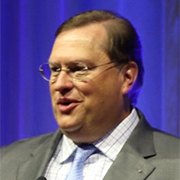
By Tom Gump, governor of Rotary District 5950, member of the Rotary Club of Edina/Morningside, Minnesota, USA
My district has several new and vibrant clubs. They are all flourishing. Not just because they formed, but also, because they keep on growing.
A majority of charter members, about 88%, are new to Rotary. So, we need to nurture these new clubs as they don’t all know the Rotary way. How do we do this most effectively? It’s simple, we: give them a cause, stay flexible, add diversity, and have fun!
Give them a cause and a way to act
I speak to a lot of Rotarians and ask why they joined Rotary and why they stay. They stay for friendship, fun, and service. You have to keep members engaged with service projects or they will likely leave.
What are the best type of service projects? The ones that focus around a cause, as there is nothing more engaging or motivating than working on a cause. Before COVID-19, some of the members of The Rotary Club of Minnesota Veterans would drive for two hours to come to an in-person meeting or service project even if it was a simple blood, food, or clothing drive.
Combine service with fun and you have a winning event. For example, we signed cards for active military personnel while simultaneously having a pizza and beer party. Our new Kaleidoscope Rotaract Club serves individuals with autism and their families and has similar events.
Be flexible
Rotary International studies show that most people leave Rotary because of too many requirements and financial obligations. Clubs can alleviate this by being flexible.
- Meeting Time: Most traditional clubs meet on Monday through Friday over breakfast or lunch. New clubs tend to meet on Tuesday nights and Saturday mornings.
- Meeting Place: Most traditional clubs meet near where members live or work and typically meet at a country club or a hotel and participate in a mandatory, fixed-price meal. That is changing as new corporate Rotary clubs are meeting at work and young professionals are meeting at bars and restaurants without the burden of fixed-price meals. Places of worship are also becoming more popular. Our Veterans Club meets in the basement of the church where one of its members is the Pastor.
- Meeting Format: Our traditional clubs typically have four business meetings a month. Our new clubs have two business meetings a month and replace the other meetings with a social or service project. Our new clubs have “Rotary In-the-Workplace.” We visit a member’s place of business and tour it. For example, we have visited an airport owned by a member and took those that wanted to fly on a short plane ride. We also visit local grant recipient facilities and conduct service projects there. You could unpack boxes and load the shelves at the local food bank. If you’re meeting in-person, make sure to bring a breakfast or lunch treat and coffee.
- Meeting Delivery: Before the pandemic, most traditional clubs met in person. Now most clubs are meeting on virtual or “hybrid” virtual/in-person meetings. There is an excellent blog on how to set up such a meeting. My district’s new International Rotaract eClub for the Environment, has 20 members that come together virtually from 20 different countries from around the world. Instead of communicating through emails, like most of our traditional clubs do, this club communicates primarily through WhatsApp.
Add diversity of all kinds to build interest
District 5950 started several new cause-based clubs, reduced membership barriers, and provided new flexible membership models. With this came 80 additional new female members to our district, increasing the percentage of female members from 30% to 32.25% this year. The bump came primarily from three newly-formed clubs:
- The Twin Cities Eco Club has 52% female members;
- The Rotary Club to End Human Trafficking has 61% female members; and
- The Network for Empowering Women Rotary Club has 69% female members.
Of course, striving for gender parity is not enough. We need to seek diversity of all types. Our new clubs are more diverse in other areas as well; but, exact statistics on those areas is not requested on our membership forms for privacy reasons. Our district is currently working on a Pride club.
Have fun
Our most recent club, the Rotary E-Club of Global Travelers, which formed on 23 April and was chartered on 1 May, recently conducted a virtual friendship exchange with India. After taking a virtual tour, the club participated in an online Indian cooking class. This will soon be followed by a yoga and meditation class.
If you nurture your new clubs by giving them a cause, encouraging flexibility, adding diversity, and having fun – your club is destined to not only survive; but also to thrive!
The Nurturing New Clubs course provides best practices for guiding new clubs during their formative years.
https://blog.rotary.org/2021/05/13/easy-fun-ways-to-keep-a-new-club-going/
